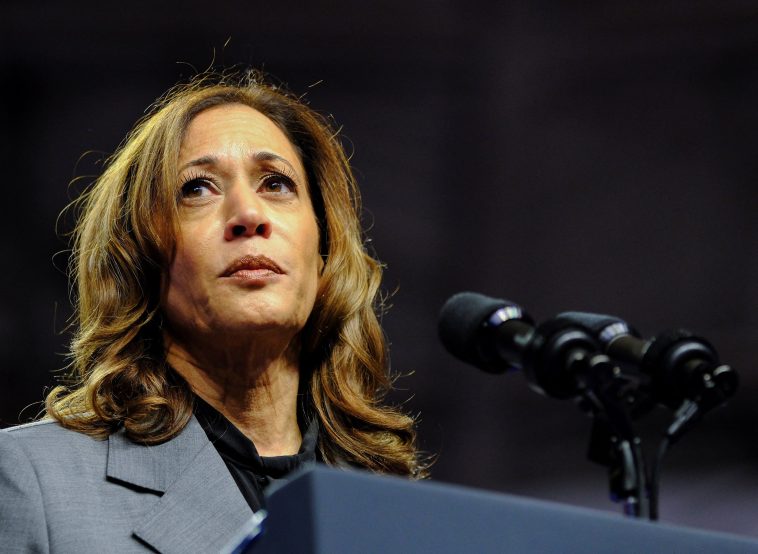In a staggeringly brief period of just 15 weeks, Kamala Harris managed to fritter away a whopping $1.5 billion on an ill-fated presidential campaign that lacked any sense of budget control. This financial fiasco has inevitably led to probing questions from both internal and external spectators, as they struggle to comprehend where on earth such astronomical sums of money disappeared. Despite having a veritable war chest of funds at her disposal, Harris made history as the first Democratic presidential candidate in 20 years to lose the national popular vote, falling at every major hurdle to the then President-elect Donald J. Trump.
A large bulk of Harris’ wasteful spending spree was directed towards an aggressive and apparently futile advertising campaign, which sought to coerce the electorate with a ceaseless bombardment of advertisements, paid social media influencers, commissioned door-knockers, and a platoon of salaried staff. Not a single battleground state fell into their trap, marking a comprehensive rejection of the flawed strategy at the grassroots level. The fact that this financial lavishing averaged a mind-boggling $100 million per week makes its failure even harder to swallow for some Democrats.
Not content with just underutilizing her colossal budget in ineffective advertising, Harris’ campaign became synonymous with conspicuous consumption. Among the questionable expenses on her laundry list of sprees included exorbitantly-priced rallies, ostentatious town halls, celebrity concerts, and even drone displays that seemed more focused on spectacle than substance. As a result, many Democrats have been left scratching their heads, questioning if the star-studded events featuring big names like Lady Gaga and Beyoncé were more about flaunting expenditures than promoting a real political agenda.
Among the most glaring misjudgments of the Harris campaign was their obsession with advertising. The campaign’s financial records evidence that a disproportionate $494 million was squandered in merely producing and purchasing media space between July 21 and October 16. However, insiders whisper that this figure ballooned to nearly $600 million as Election Day approached, further highlighting the campaign’s inability to manage its own resources.
But the scale of financial irresponsibility was not limited to just advertising. Other ill-advised ventures culled from the campaign’s coffers included a hefty $2.5 million splurged on digital agencies specializing in managing online influencers. This blatant pandering to pop culture surely exposed the desperation of the campaign, more willing to trend on social media than focus on tangible policy propositions.
The Harris campaign demonstrated their tone-deaf attitude once again by throwing around $900,000 for advertising on the shell of the Sphere venue in Las Vegas during the campaign’s last week. Doubtless, it was an act that seemed more of a vanity project than a practical means of gaining voter traction. There was also the bizarre spectacle of drone shows before a debate in Philadelphia and a Pittsburgh Steelers game in October, leaving many to wonder at the mission, or lack thereof, of these expenditures.
Meanwhile, Donald Trump himself couldn’t resist a dig at the Harris campaign’s financial shambles. In a well-aimed social-media post, he jovially extended a helping hand saying, ‘Whatever we can do to help them during this difficult period.’ His taunt was a stark reminder of the pace at which the Harris campaign was burning through its funds.
Yet another perplexing investment the Harris campaign made was pumping $1 million into Oprah Winfrey’s Harpo Productions. Predictably, throwing money at celebrity endorsements did little to bolster Harris’ chances. It was indicative of the same wasteful pattern seen throughout her campaign and seemed to do nothing more than line the pockets of Hollywood insiders.
When revelations surfaced that the Harris operation had conducted virtually no research into the candidate’s strengths and weaknesses despite her presence on the ticket from the start, it became crystal clear that this was an operation run on overspending, not robust and strategic planning. Instead, a cool $12 million was nonchalantly pumped into polling from July 21 to mid-October. With such a gross overemphasis on numerical analytics over substantial introspection, the campaign’s downfall seemed inevitable.
Campaign memos leaked soon after painted an equally grim picture for the Harris camp. One such memo lamented the underutilization of ‘high-performing ads’ that failed to secure significant funding. This included one ad that had secured a glowing ‘100th percentile’ score, signifying it was the most effective of the lot. Yet, true to form, it was virtually never aired.
All of these poor financial decisions have elicited strenuously critical questions from both inside and outside the Harris campaign, with many wondering where the judgment faltered so badly. It’s clear that the Harris campaign was more consumed with creating an ostentatious spectacle filled with celebrity endorsements and exorbitant spending than making a genuine connection with the everyday voter.
The Harris campaign’s mishandling of funds and poor strategic choices symbolize everything that’s wrong with the kind of politics she espouses — high on glamour and spectacle, low on substance and fiscal responsibility. It’s an unsavory snapshot of contemporary political culture where shocks and stunts receive more attention than actual policy-making and connection at the grassroots level.
In conclusion, the extraordinarily wasteful Harris campaign represents a stark warning for future politicians. By placing focus on extravagance and spectacle, rather than policy and genuine political connection, Harris arguably threw away not only an exorbitant amount of money, but also her chance to genuinely connect with the American voters. Sadly, it was a tragic tale of wasted potential.


